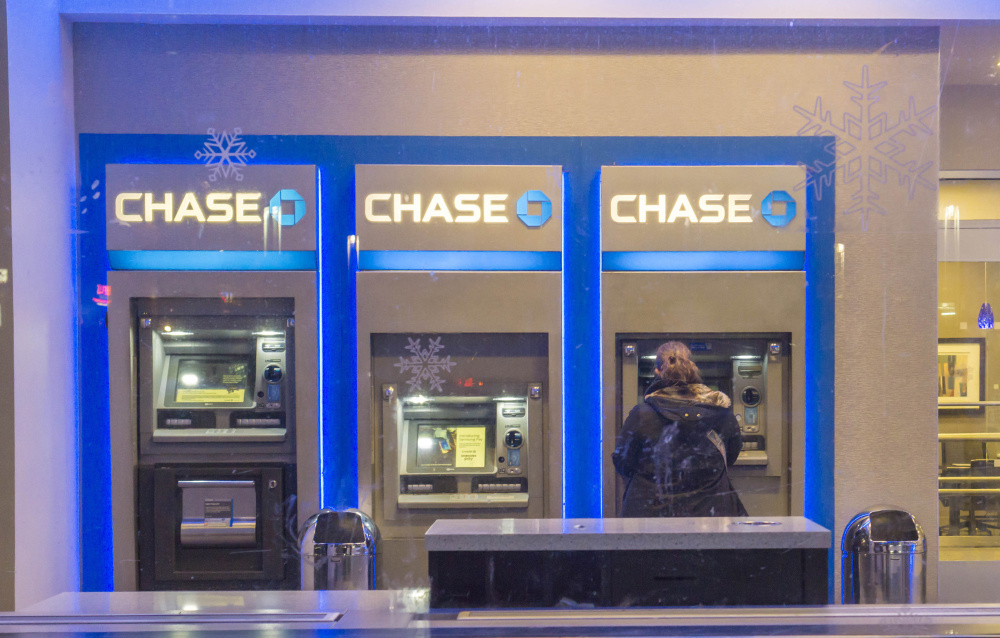PITTSBURGH — Despite talk about the coming cashless society, the automated teller machine – which recently turned 50 years old – doesn’t appear to be headed for the scrap yard just yet.
“In the month of March, PNC dispensed more cash from ATMs than we have in the history of our ATM network,” said Ken Justice, head of the Pittsburgh-based bank’s ATM operations. “Cash demand is still as high as it has ever been.”
By most accounts, the first ATM was opened by Barclays bank in suburban London on June 27, 1967.
The machines debuted in the U.S. when Chemical Bank installed an ATM, initially dubbed “Docuteller,” at a branch on Long Island, N.Y., in 1969.
“On Sept. 2, our bank will open at 9:00 and never close again,” a Chemical Bank advertisement crowed at the time.
In the early days, the machines merely dispensed cash. Chemical Bank’s Docuteller wasn’t connected to a network, so customers were trusted not to withdraw more than what they had in their accounts.
PNC Bank’s predecessor company, Pittsburgh National Bank, launched its first ATM in 1974, Justice said. The innovation meant customers for the first time could get cash on weekends and in the evenings after banks had closed.
Today, the machines have become a ubiquitous convenience of modern life, with some 3 million worldwide, including about 425,000 in the U.S.
Since the old days, the functionality of ATMs has evolved to allow customers to deposit cash and checks, pay bills and buy postage stamps. Advanced-function machines also cash checks by dispensing $1 bills and depositing change into customer accounts.
“We’re trying to allow customers to do as many transactions through the ATM as they could at the teller line,” Justice said.
For the last few years, Pittsburgh-based Dollar Bank has been using interactive video ATMs at some of its branches that let customers see and speak with live tellers. The machines connect customers with Dollar’s call center from 8 a.m. to 8 p.m. six days a week, allowing them to conduct virtually any transaction remotely that they could at a teller window.
In Europe, ATMs commonly dispense minutes and ring tones for cell phones and spit out airplane tickets. Some countries use ATMs as foreign currency exchange terminals, trading dollars for euros, Justice said.
In the latest evolution, banks have begun offering cardless ATM transactions with the help of smartphones. Customers use an app to generate a one-time code they key in at the ATM, along with their PIN, to conduct transactions.
The service is being billed as a customer convenience, and as a way to combat “skimming” fraud in which criminals install hard-to-see theft devices on ATMs that steal card numbers used to make counterfeit cards. The devices usually are used in tandem with tiny hidden cameras that capture personal identification numbers.
“If you can avoid having to stick a card into something, it’s safer,” Justice said. PNC hopes to begin offering the technology by the end of the year, he said.
Also on the horizon, customers will be able to choose the mix of bills dispensed from an ATM, he said. “Traditionally, the machine decides what it will give you. Going forward, you will be able to chose if you want higher bills, or if you want more ones,” for example, he said.
In the future, ATMs also could be equipped to allow biometric authentication – giving customers the option of using fingerprints, palm veins, voices or retina scans to access their accounts much like the technology being used on smartphones.
Copy the Story LinkSend questions/comments to the editors.



Success. Please wait for the page to reload. If the page does not reload within 5 seconds, please refresh the page.
Enter your email and password to access comments.
Hi, to comment on stories you must . This profile is in addition to your subscription and website login.
Already have a commenting profile? .
Invalid username/password.
Please check your email to confirm and complete your registration.
Only subscribers are eligible to post comments. Please subscribe or login first for digital access. Here’s why.
Use the form below to reset your password. When you've submitted your account email, we will send an email with a reset code.